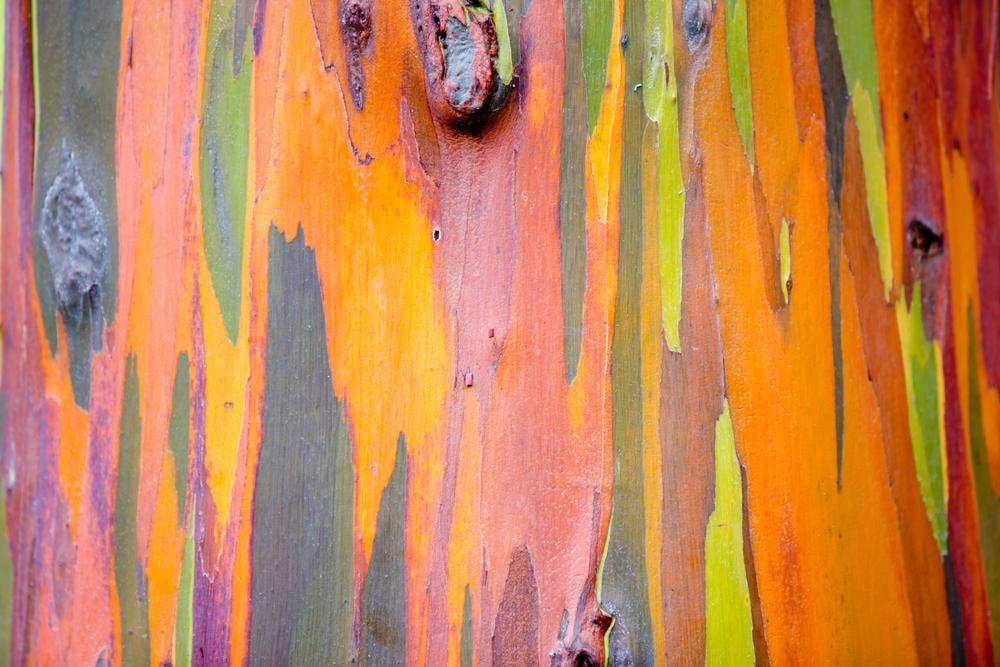These incredible-looking trees may seem too colorful to be real, but it’s all nature’s doing. Cousin to the fragrant flowering eucalyptus tree, the “rainbow eucalyptus” has been named for this special feature; its trunk is decorated with beautiful natural neon colors, and there’s not a single paintbrush in sight.

Rainbow eucalyptus trees, also known as Eucalyptus deglupta or Mindanao gum, shed their bark every season to reveal a fresh neon-bright bark below. Photographs of this magical phenomenon are sweeping across the internet, and the naturally occurring color palate is almost beyond comprehension.
As each outer layer of gray-brown bark dries and peels, the bark beneath matures from a shade of bright green and then proceeds to shades of red, orange, purple, and even blue. Over the course of a year, the colors transform until the bark is ready to peel, at which point the colorful display begins again.

However, these trees also grow in Hawaii and in the southern regions of California, Texas, and Florida, so for nature lovers in North America, this stunning spectacle is not so far out of reach. The tree grows up to 250 feet tall in its native rainforest habitats and can reach heights of 100 to 125 feet in the United States.

Though the rainbow eucalyptus tree’s impressive height is noteworthy, it is actually the vibrant neon color display that steals the show. When Brett Summerell, chief botanist at the Royal Botanic Garden Sydney, first encountered the rainbow eucalyptus tree, he questioned, “Who painted the bark?”
Alluding to the varied colors the rainbow eucalyptus tree displays as it sheds its bark, Summerell explained: “This process isn’t unusual; the forest red gum, spotted gum, and others do it too—it’s just that the color changes are way outside the norm seen for eucalypts.”

Despite its unique look, the rainbow eucalyptus is widely farmed at tree plantations for reasons other than its amazing color palate. The tree is an excellent source of pulpwood, the main ingredient in the production of white paper.
Additionally, these trees also have tapering leaves that give off a mild aromatic after smell and small white flowers that bloom throughout the year depending on the specific location.

When it comes to rainbows, nature knows best.





